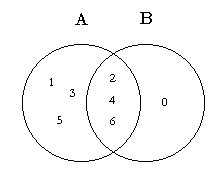Please wait while we process your payment
If you don't see it, please check your spam folder. Sometimes it can end up there.
If you don't see it, please check your spam folder. Sometimes it can end up there.
Please wait while we process your payment

By signing up you agree to our terms and privacy policy.
Don’t have an account? Subscribe now
Create Your Account
Sign up for your FREE 7-day trial
By signing up you agree to our terms and privacy policy.
Already have an account? Log in
Your Email
Choose Your Plan
Individual
Group Discount
Save over 50% with a SparkNotes PLUS Annual Plan!
 payment page
payment page
Purchasing SparkNotes PLUS for a group?
Get Annual Plans at a discount when you buy 2 or more!
Price
$24.99 $18.74 /subscription + tax
Subtotal $37.48 + tax
Save 25% on 2-49 accounts
Save 30% on 50-99 accounts
Want 100 or more? Contact us for a customized plan.
 payment page
payment page
Your Plan
Payment Details
Payment Summary
SparkNotes Plus
You'll be billed after your free trial ends.
7-Day Free Trial
Not Applicable
Renews May 2, 2025 April 25, 2025
Discounts (applied to next billing)
DUE NOW
US $0.00
SNPLUSROCKS20 | 20% Discount
This is not a valid promo code.
Discount Code (one code per order)
SparkNotes PLUS Annual Plan - Group Discount
Qty: 00
SparkNotes Plus subscription is $4.99/month or $24.99/year as selected above. The free trial period is the first 7 days of your subscription. TO CANCEL YOUR SUBSCRIPTION AND AVOID BEING CHARGED, YOU MUST CANCEL BEFORE THE END OF THE FREE TRIAL PERIOD. You may cancel your subscription on your Subscription and Billing page or contact Customer Support at custserv@bn.com. Your subscription will continue automatically once the free trial period is over. Free trial is available to new customers only.
Choose Your Plan
This site is protected by reCAPTCHA and the Google Privacy Policy and Terms of Service apply.
For the next 7 days, you'll have access to awesome PLUS stuff like AP English test prep, No Fear Shakespeare translations and audio, a note-taking tool, personalized dashboard, & much more!
You’ve successfully purchased a group discount. Your group members can use the joining link below to redeem their group membership. You'll also receive an email with the link.
Members will be prompted to log in or create an account to redeem their group membership.
Thanks for creating a SparkNotes account! Continue to start your free trial.
We're sorry, we could not create your account. SparkNotes PLUS is not available in your country. See what countries we’re in.
There was an error creating your account. Please check your payment details and try again.
Please wait while we process your payment

Your PLUS subscription has expired
Please wait while we process your payment
Please wait while we process your payment

Sets
We are already somewhat familiar with set notation: we can pick a solution set from a replacement set. The answer is a finite number of points, written in brackets; for example, {1, 2, 3}. This is the set containing only the elements 1, 2, and 3. But how do we pick a solution set from all the real numbers?
When we solve the inequality 3x < 6, we end up with the answer x < 2. We can write this answer in set notation. We write {x : x < 2} or {x| x < 2}, and we say "the set of all x such that x is less than 2." This is the set of all real numbers that satisfy the equation 3x < 6.
Here are some examples of sets in set notation:
A Venn diagram is a representation of two or more sets that shows the relationship between them. A Venn diagram looks like two (or more) overlapping circles. Each circle represents a set. Members that both sets have in common are placed in the overlap, and members that one set has but the other doesn't are placed in the non-overlapping part of their respective sets. Here is an example of a Venn diagram for the sets A = {1, 2, 3, 4, 5, 6} and B = {0, 2, 4, 6}:

To draw a Venn diagram for two sets, first place all the members that are in both sets in the center ("overlap") of the diagram. Then, place all the remaining members of set A in the non-overlap of circle A. Place all the remaining members of set B in the non-overlap of circle B.
Some sets will have no members in common. If this is the case, the overlap of the two circles will be empty. In some instances, all the members of one set will be contained in the other set. In this case, the non-overlap of one set will be empty.
Please wait while we process your payment

